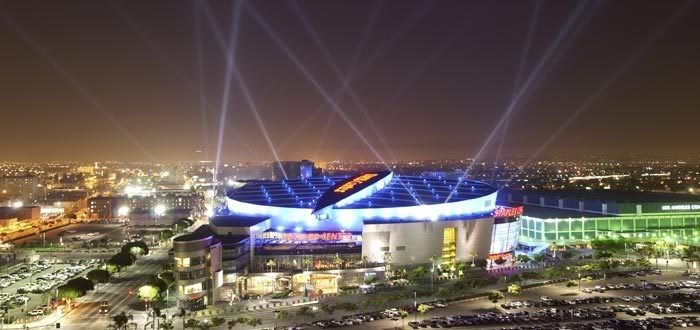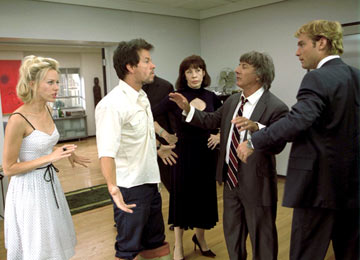As I have done more research for my graffiti series I have come to realize that many of the concepts i originally wished to discuss have come into a single concept and theory that is just an analysis of graffiti. I believe this will be my last post of analysis on graffiti however I will still do a post that contains my favorite works of graffiti. The initial goal of this post was to discuss the way graffiti shapes and changes the spatial plane however I get distracted at several points, my apologies.
The most common places to find graffiti worldwide are inner city low income neighborhoods. The graffiti of these neighborhoods has emerged as form of expression, a form of storytelling that is the inner city’s way of expressing the social conditions that exist (for more on that read the last part of the series in which I discuss and article entitled “Bombing Modernism”). This graffiti has also become a staple of petty crime within these neighborhoods particularly associated with gang activity. The use of graffiti in association with gang activity is so common that many people caught vandalizing or throwing up their art are brought in not only on vandalism charges but also on suspected gang affiliation regardless of the act of art (many of these cases have been documented in Los Angeles, Chicago, Atlanta and the greater Detroit area). In an effort to combat what is seen as gang representations many city planners have begun to put building mandates on construction near these neighborhoods in an attempt to prevent graffiti. These mandates range from simple instructions such as window placement to avoid space for tagging to requiring construction projects to paint murals on the side of buildings to prevent tagging-a process that seems counterintuitive since the whole point of graffiti is an attempt to beautify and change the normal landscape. The more intense actions taken to prevent graffiti is large scale gentrification.
The most notable example of this is in the city of Los Angeles. Downtown LA is a neighborhood of multiple ethnicities, multiple city landmarks as well as multiple housing projects. The housing projects in downtown have also caused an increase in crime on the area most notably a rise in graffiti. Every offramp, overpass, apartment building, parking lot wall, billboard etc in downtown LA is covered in graffiti. About 6 years ago the city of LA decided that this graffiti made the downtown area appear trashy and unsuitable place to be which was problematic since the LA Convention Center and the Staples Center (home of the Lakers) are both located smack in the middle of downtown. The graffiti was bad for business and the city could not let that stand, in response they decided to tear down housing projects, evicting people from their homes and instead build high rise condominiums in hope that the people who lived there would not be inclined towards crime and graffiti. The process seems to have failed. The graffiti of downtown LA, so close to the lights of the Staples Center is the expression of the lower class. It is the outrage of the people of the housing projects who live a block away from the staples center but they cannot afford a ticket. It is their anger that instead of the city building housing project parking complexes the money went towards VIP parking garages for the rich and famous. I think I heard it best explained when i was 10 years old, I was walking back to the car from a staples center game when i saw a man pull a gun on a couple walking on the street across from us. I remember the guy yelling “Nah ive gotta do this! Ya people dont get this. you people can go to the game, but not me no. Got 90210 on the TV but fuck you that isnt the same city, not to us we cant get none of that. thats why we do this thats why it looks like this.” I later asked my dad what the guy meant and he told me the man was angry that he was poor and that the city divide between rich and poor was so large.
That same man was probably the same guy who gets arrested for putting graffiti up on the side of his housing project.
Graffiti unmasks the social stratification and the divide between rich and poor within a city. The city planners of LA, none of whom reside in these neighborhoods or are aware of the conditions simply view the graffiti as a barricade justifying the gentrification. This is a common phenomenon, when people of the upper and middle class see graffiti they typically react negatively and deem that area of town where the graffiti is prevalent to be sub par and derelict.
The way in which graffiti influences a city and its inhabitants it wide ranging. Cities such as LA and New York with long histories of gang violence and a large lower class population tend to view graffiti as a scar on the city. The graffiti of these cities represents the lower class, it is not traditionally pictures but tags and other quick numbers and slogans, projects done on the fly to avoid the law. In a different part of the country, one that is traditionally seen as conservative there stands a liberal gem where graffiti has become engrained in its “weird” culture, Austin, Texas. Graffiti is seen throughout Austin, so common it has been put on T-Shirts that symbolize the spirit of the city, but why the difference? Why do they tear down graffiti in LA and not Austin? Is it the the poor/rich divide? No. Both cities contain a large wealth gap. Is it the presence of a major college campus? Nope. UT is the heart of Austin but USC is right in south central LA where modern gang graffiti is believed to have its roots. The difference is the type of graffiti. the graffiti of austin are not tags nor are they associated with gang activity or the lower class, the graffiti of austin is done through pictures. It carries a similar message but on the eye is more aesthetically appealing. Instead of attempting to prevent graffiti from springing up Austin had at one point several places in the city dedicated to graffiti. The city of Austin seems very open to Graffiti however we see that spatial lines are drawn to segregate the graffiti portion of the community. The upper class wealthy Austinites who control thing such as the city council and dislike graffiti do not reside within the city, they reside on its outskirts in the hill country on their large estates far away from the portions of the city that graffiti is deemed acceptable. This policy is eerily similar to the policy in Los Angeles. If graffiti had been thrown up in the wealthy neighborhoods of Austin then mass removal would take place. Had the areas that the graffiti in Austin appeared be ares of economic importance to the city the city would have engaged in large scale gentrification similar to LA (while the graffiti has appeared in many popular tourist places in Austin it is part of the locale which makes it alluring different then LA
The most common places to find graffiti worldwide are inner city low income neighborhoods. The graffiti of these neighborhoods has emerged as form of expression, a form of storytelling that is the inner city’s way of expressing the social conditions that exist (for more on that read the last part of the series in which I discuss and article entitled “Bombing Modernism”). This graffiti has also become a staple of petty crime within these neighborhoods particularly associated with gang activity. The use of graffiti in association with gang activity is so common that many people caught vandalizing or throwing up their art are brought in not only on vandalism charges but also on suspected gang affiliation regardless of the act of art (many of these cases have been documented in Los Angeles, Chicago, Atlanta and the greater Detroit area). In an effort to combat what is seen as gang representations many city planners have begun to put building mandates on construction near these neighborhoods in an attempt to prevent graffiti. These mandates range from simple instructions such as window placement to avoid space for tagging to requiring construction projects to paint murals on the side of buildings to prevent tagging-a process that seems counterintuitive since the whole point of graffiti is an attempt to beautify and change the normal landscape. The more intense actions taken to prevent graffiti is large scale gentrification.
The most notable example of this is in the city of Los Angeles. Downtown LA is a neighborhood of multiple ethnicities, multiple city landmarks as well as multiple housing projects. The housing projects in downtown have also caused an increase in crime on the area most notably a rise in graffiti. Every offramp, overpass, apartment building, parking lot wall, billboard etc in downtown LA is covered in graffiti. About 6 years ago the city of LA decided that this graffiti made the downtown area appear trashy and unsuitable place to be which was problematic since the LA Convention Center and the Staples Center (home of the Lakers) are both located smack in the middle of downtown. The graffiti was bad for business and the city could not let that stand, in response they decided to tear down housing projects, evicting people from their homes and instead build high rise condominiums in hope that the people who lived there would not be inclined towards crime and graffiti. The process seems to have failed. The graffiti of downtown LA, so close to the lights of the Staples Center is the expression of the lower class. It is the outrage of the people of the housing projects who live a block away from the staples center but they cannot afford a ticket. It is their anger that instead of the city building housing project parking complexes the money went towards VIP parking garages for the rich and famous. I think I heard it best explained when i was 10 years old, I was walking back to the car from a staples center game when i saw a man pull a gun on a couple walking on the street across from us. I remember the guy yelling “Nah ive gotta do this! Ya people dont get this. you people can go to the game, but not me no. Got 90210 on the TV but fuck you that isnt the same city, not to us we cant get none of that. thats why we do this thats why it looks like this.” I later asked my dad what the guy meant and he told me the man was angry that he was poor and that the city divide between rich and poor was so large.
That same man was probably the same guy who gets arrested for putting graffiti up on the side of his housing project.
Graffiti unmasks the social stratification and the divide between rich and poor within a city. The city planners of LA, none of whom reside in these neighborhoods or are aware of the conditions simply view the graffiti as a barricade justifying the gentrification. This is a common phenomenon, when people of the upper and middle class see graffiti they typically react negatively and deem that area of town where the graffiti is prevalent to be sub par and derelict.
The way in which graffiti influences a city and its inhabitants it wide ranging. Cities such as LA and New York with long histories of gang violence and a large lower class population tend to view graffiti as a scar on the city. The graffiti of these cities represents the lower class, it is not traditionally pictures but tags and other quick numbers and slogans, projects done on the fly to avoid the law. In a different part of the country, one that is traditionally seen as conservative there stands a liberal gem where graffiti has become engrained in its “weird” culture, Austin, Texas. Graffiti is seen throughout Austin, so common it has been put on T-Shirts that symbolize the spirit of the city, but why the difference? Why do they tear down graffiti in LA and not Austin? Is it the the poor/rich divide? No. Both cities contain a large wealth gap. Is it the presence of a major college campus? Nope. UT is the heart of Austin but USC is right in south central LA where modern gang graffiti is believed to have its roots. The difference is the type of graffiti. the graffiti of austin are not tags nor are they associated with gang activity or the lower class, the graffiti of austin is done through pictures. It carries a similar message but on the eye is more aesthetically appealing. Instead of attempting to prevent graffiti from springing up Austin had at one point several places in the city dedicated to graffiti. The city of Austin seems very open to Graffiti however we see that spatial lines are drawn to segregate the graffiti portion of the community. The upper class wealthy Austinites who control thing such as the city council and dislike graffiti do not reside within the city, they reside on its outskirts in the hill country on their large estates far away from the portions of the city that graffiti is deemed acceptable. This policy is eerily similar to the policy in Los Angeles. If graffiti had been thrown up in the wealthy neighborhoods of Austin then mass removal would take place. Had the areas that the graffiti in Austin appeared be ares of economic importance to the city the city would have engaged in large scale gentrification similar to LA (while the graffiti has appeared in many popular tourist places in Austin it is part of the locale which makes it alluring different then LA
The way in which graffiti changes a physical environment is similar to the effect of a weather pattern. Rain and hail discourage certain people, those who do not want to get wet from going out, similarly graffiti acts as a barricade to portions of cities for those who dismiss it as vandalism and vulgar. We see this displayed in the May 68 protests in which graffiti slogans played a key role. Graffiti was used as a tool to mark territory of the protesters, an area that they wished to have blocked off from the government bureaucrats. The strategy was effective, during the protests government officials insulted the movement by pointing out its lack of respect for the city by citing the numerous graffiti slogans that had emerged. As graffiti became popular in portions of the city certain people congregated there, the revolutionaries, no longer other portions of the French population that had previously occupied certain areas.
As graffiti emerges the physical landscape reacts to it. The population alters or maintains the spatial area in order to act accordingly with the graffiti that has appeared. This phenomena is seen in every city in this country and probably worldwide, look at portions of cities with large amounts of graffiti and then look at how construction and the city has built around it.





